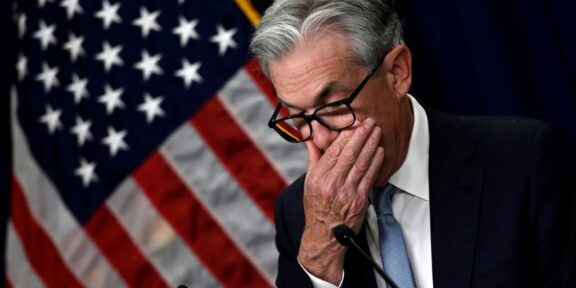UPS is girding for more supply chain problems in 2022 after this year’s upheaval, but does not expect the disruption to cause huge spikes in transport costs, the shipping giant’s international president Scott Price told AFP.
Price said low vaccination rates in key developing countries will likely lead to additional shortages of raw materials and components similar to those that have plagued industries from automakers to apparel to homebuilders.
“The logistics industry does not see 2022 as having any less disruption in supply chains than in 2021,” Price told AFP in an interview.
“I half-jokingly tell people ‘Order your Christmas presents now because otherwise on Christmas day, there may just be a picture of something that’s not coming until February or March,'” Price said.
But Price expressed confidence that transport costs could be contained in 2022 after the company enacted a series of surcharges earlier in the pandemic amid skyrocketing demand and higher operating expenses.
UPS spent more paying for disinfectant, installing plastic dividers in work sites and covering hotel costs for employees in markets where workers were unable to commute to their homes due to strict government mandates.
“Some of those costs are going away,” said Price, who said 2022 shipping rates would be increased by 2.8 percent on average, well below the 10-year average.
In 2021, UPS raised prices between 4.0 and 5.5 percent, depending on the market.
– Vaccine ‘inequity’ –
UPS’s outlook for more supply chain disarray follows announcements from several other companies over the last week, including Toyota, which said Friday it will cut car output by 70,000 units in September and 330,000 in October because of ongoing virus disruptions and a chronic global semiconductor chip shortage.
Homebuilder PulteGroup, which has previously suffered shortages of lumber and glass, warned this week of slower home closings, saying “the supply chain issues that have plagued the industry throughout the pandemic have increased during the second half of the year.”
Paint company Sherwin-Williams announced surcharges due to raw material shortages worsened by Hurricane Ida, which took key US petrochemical production off line.
Apparel company Lululemon Athletica said coronavirus restrictions forced closure of factories in Vietnam, which account for one-fifth its inventory. The company is scrambling to shift some of that production to other manufacturing centers and also spending more on air shipments due to backlogs at shipping ports.
Price said one of the big dislocations during the pandemic has been the loss of shipping capacity on commercial jets, which typically deliver some cargo on international flights.
But with the downturn in international travel, “we’ve got a lot of aircraft sitting in deserts,” said Price, adding that the dynamic pushes even more goods to ports, or to the air services of UPS or competitors.
A key question will be the economic fallout from the “inequity in Covid vaccine access” between the developed and developing world, Price said.
“When you look at where raw materials come from, some of these rare earths, they come from those locations that don’t have the vaccine,” he said. “So there’s still disruption risk going into 2022.”
UPS normally announces its annual rate increase in November, but wanted to go early this year to allow clients increasingly worried about inflation to plan more effectively.
Price expects to hold UPS’s price increases to the 2.8 percent level as more aspects of the supply chain normalize. This should happen as long as the Covid-19 situation does not dramatically worsen.
“God forbid something worse than the Delta variant comes out,” he said. “Then all bets are off for everybody.”
jmb/st









